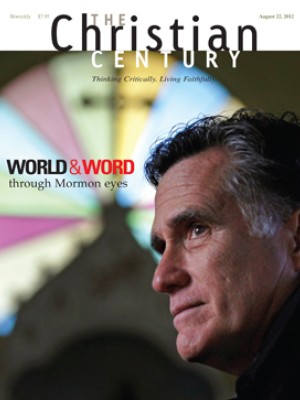Take This Waltz
This low-key, intimate Canadian film is in danger of passing by unnoticed. An anatomy of two relationships—a marriage and a courtship that overlap—the film is excitingly fresh and unconventional, and one of the few bright spots in a dim summer movie season.
The director, Sarah Polley, is also a fine actor, and her approach to filmmaking comes out of her understanding of the way actors can feel their way into roles. Her first directing project, the poignant 2006 drama Away from Her, starred Julie Christie as a woman descending into Alzheimer’s, and the entire movie took its emotional cues from Christie’s intuitiveness.
Read our latest issue or browse back issues.
Take This Waltz goes much further. Michelle Williams plays Margot, a Toronto woman whose husband Leo (Seth Rogen) writes cookbooks; she wants to write, too, and the fact that she hasn’t finished anything (she updates pamphlets for the parks department) is indicative of a general tentativeness about life. Five years into her marriage, she still seems to be on the verge of it, dipping her toe in the water.
On a work trip to Montreal she meets Daniel (Luke Kirby), a painter whose day job is ferrying customers around the city in a rickshaw. They share a cab ride home and discover that they live across the street from each other. It’s a dangerous situation, because there’s an immediate attraction between them. They begin to shadow each other, approaching closer and closer but holding off from physical contact because Margot is terrified of what it will spark and because of her determination to stay faithful to her husband. So their burgeoning relationship is built out of words.
Williams is at the center of this movie in the way Christie was at the center of Away from Her. The film revolves around her ability to portray intensity of emotion and quicksilver shifts of perspective. Williams gives a superlative performance. You can see exactly why Polley wanted to cast her: Williams may be the most imaginative and lyrical actress of her generation (just as Christie is of the generation that came of age in the 1960s).
Polley, who also wrote the script, treats the two men in Margot’s orbit with equal sensitivity. Margot and Leo wrestle, play jokes, trade extravagant insults—they’re like teenagers caught fast in the honey pot of a first serious romance. But it’s hard to believe in their relationship as a marriage, because as easy as they are around each other, they keep their distance.
When Leo tries to initiate lovemaking in the midst of one of their wrestling bouts, she shrinks from him—she finds it confusing to mix childish and adult impulses. When they go out for a nice dinner to celebrate their anniversary, he resists her efforts to jump-start the conversation because he doesn’t have anything to say, and he doesn’t see the benefit of talking for the sake of talking. Daniel, by contrast, draws out Margot’s unacknowledged need for the kind of love that can swallow you up.
Kirby is terrific, and Rogen, who has previously shown only a boorish, stand-up comic personality, is surprisingly good as Leo. A couple of scenes seem to be beyond his skills, but Polley draws out a side of him that no one has seen before. The movie may evoke memories of other offbeat relationship movies (especially Blue Valentine, in which Williams starred opposite Ryan Gosling), but it has its own temperature and style.
Sometimes the writing feels pushed and self-conscious (other times it’s quite beautiful); the movie has its affectations, and some sequences fall flat. But Polley is a filmmaker of unusual poetic delicacy, whose way of sculpting scenes out of her actors’ performing rhythms can seem miraculous.





